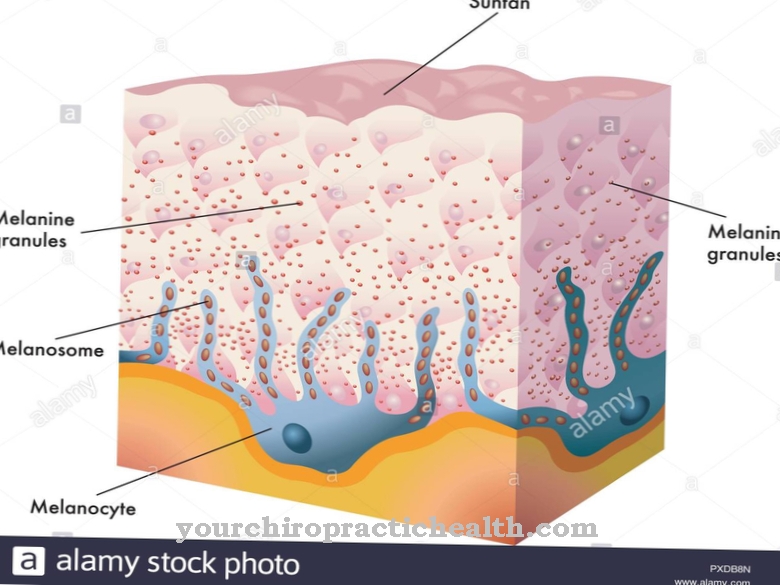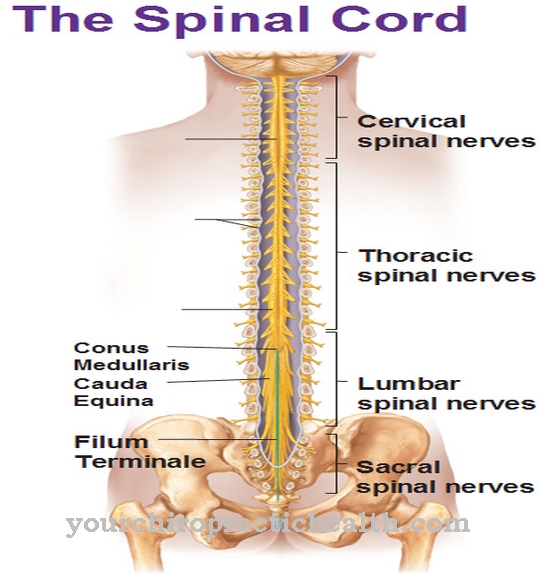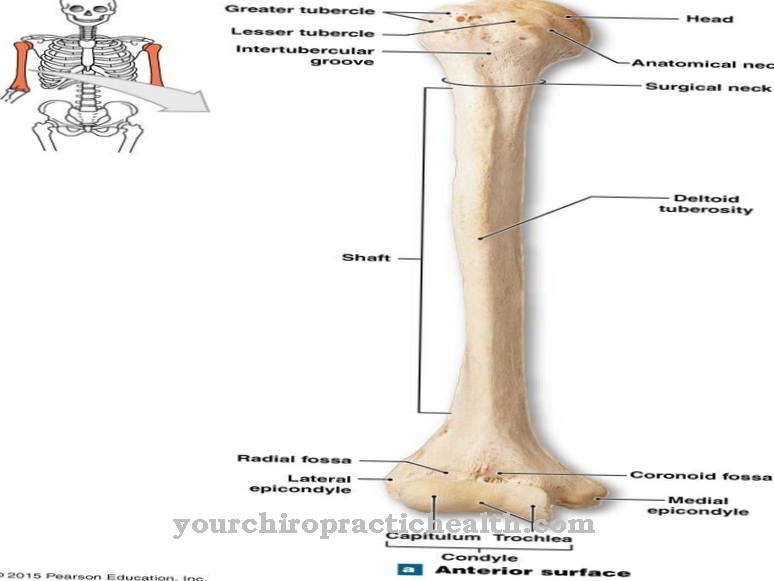The Vomiting center consists of the area postrema and the nucleus solitarius and is located in the brain stem. It triggers the process of vomiting and thus reacts defensively to possible toxins that a person ingests through food. Cerebral vomiting is based on increased pressure in the brain or direct pressure on the vomiting center; possible causes are traumatic brain injury, stroke, brain edema, tumors, heat stroke or sunstroke and other clinical pictures.
What is the vomiting center?
The vomiting center is part of the brain and is located in the brain stem. It owes its name to its main function: inducing vomiting and coordinating different areas of the brain that are involved in it. How exactly the individual parts of the vomiting center interact is not yet fully understood.
The most important structures of the vomiting center are the area postrema and the nocleus solitarius; however, it also has numerous connections to other parts of the brain and forms a complex network of nerve cells.
Anatomy & structure
From an anatomical point of view, the vomiting center does not form a self-contained structure; instead, it is an association of nerve cells that are particularly well connected within a network. However, medicine speaks of a “center”, since the vomiting center forms a functional unit.
Two anatomical structures form its physiological basis: the area postrema and the nucleus solitarius (also known as the nucleus tractus solitarii or NTS for short), which in turn both belong to the formatio reticularis. This is mostly in the brain stem, but has extensions into the elongated spinal cord (medulla oblongata) and into the interbrain (diencephalon). Within this area is the nucleus solitarius at the diamond pit.
The area postrema lies dorsal to the nucleus solitarius, i.e. H. towards the back. It includes the chemoreceptor trigger zone, a network of specialized nerve cells that lie in front of the blood-brain barrier. In addition, the vomiting center receives information from other nerve groups; for example from those that process stimuli from the gastrointestinal area.
Function & tasks
The vomiting center is responsible for controlling vomiting. As part of the area postrema, the chemoreceptor trigger zone lies in front of the blood-brain barrier and has a protective function: the nerve cells in this area have receptors that are sensitive to certain chemical substances - in particular to various poisons. If such a substance binds to a receptor, it triggers a biochemical reaction in the nerve cell.
As soon as these exceed the critical threshold value, the neuron triggers an electrical signal and forwards it via the area postrema. In this way, the chemoreceptor trigger zone detects toxins before they can spread to the blood vessels of the brain. The vomiting center responds to this stimulus by making the person vomit. Ideally, this way, the body gets rid of a large part of the toxic substances before they can even enter the bloodstream. A link with the sense of balance can induce vomiting as a result of fast spinning or roller coaster riding.
The other important part of the vomiting center, the nucleus solitarius, is not only involved in vomiting, but also represents the taste core of the brain. It performs important preparatory work in filtering and processing information that leads to subjective taste perception in higher sensory centers. His tasks therefore go far beyond the functions that he performs within the framework of the crushing center. If the nucleus solitarius finds a taste stimulus that indicates poisonous food, the vomiting center also reacts.
Disgust is a subjective response to repulsive stimuli; the vomiting center also plays a role. The psychological feeling itself does not develop in the vomiting center and it is not a purely physical sensation. Instead, it develops in the cerebrum, where higher cognitive processes also influence the sensation of disgust. Interpretations of disgust of the cerebrum can in turn influence the physiological nausea; however, this requires very strong sensations.
You can find your medication here
➔ Medicines against memory disorders and forgetfulnessDiseases
Doctors speak of cerebral vomiting when there are no physiological stimuli such as toxins, but rather a patient vomits due to inadequate irritation of the vomiting center. In this case, the vomiting center is not actually receiving external stimulus; instead, a false stimulus triggers the electrical potential in the nerve cells.
The brain cannot tell the difference and therefore treats the signal just like a real sensory impression. False irritations can arise, for example, from increased intracranial pressure. Possible causes for this are serious injuries, tumors, brain edema (due to drainage disorders, heat stroke or sunstroke, etc.), circulatory disorders of the brain or a stroke.
A stroke interrupts the blood supply to the brain so that the nerve cells no longer receive enough oxygen. This results in both temporary neurological symptoms and permanent failures in areas of the brain in which nerve cells have already died during the undersupply. In addition, direct pressure on the vomiting center can trigger cerebral vomiting. This is the case, for example, if a tumor develops near the vomiting center or if there is a traumatic brain injury.
The mildest form of traumatic brain injury is a concussion; if it leads to unconsciousness, it will last no more than ten minutes. Doctors treat cerebral vomiting on the one hand by treating its cause, on the other hand also symptomatically with various medications. Antagonists of the neurotransmitters serotonin, dopamine and tachykinin can be used for drug treatment.













.jpg)

.jpg)
.jpg)











.jpg)